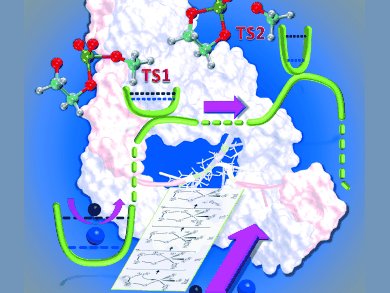The similarities and differences between the elements of the “relativistic” triad gold, platinum, and mercury in catalysis are the topic of the Review by A. Leyva-Pérez and A. Corma. What criteria are applied in the selection of a suitable catalytic system? In a Minireview, K. Zou and Y. Li write about nanocrystals with well-defined facets. The Highlights deal with the design of nanopores by mixing (M. Mastalerz) and water molecules in C60 cages (C. Thilgen). “How did we learn to use arrows in chemistry and what do they have in common with abstract art?” asks S. Alvarez in an Essay.
In the Communications section, D. M. York et al. discuss the reaction path and transition states of RNA transphosphorylation models in theory and experiment (see picture). J. Lahann et al. succeeded in the chemical control of the bending of multicompartment microcylinders. A nickel- and cobalt-catalyzed direct alkylation of azoles with N-tosylhydrazones that bear unactivated alkyl groups is reported by M. Miura and co-workers. A. C. Filippou et al. present open-shell complexes with metal–germanium triple bonds.
Image: © Wiley-VCH




